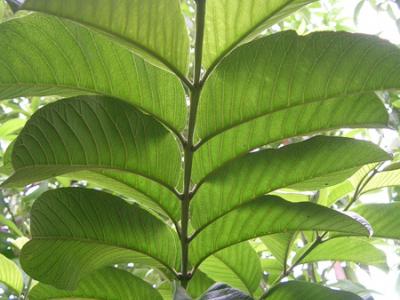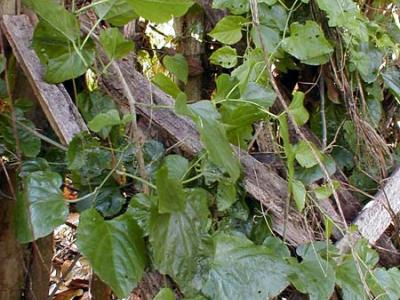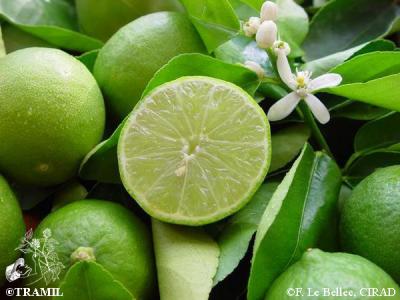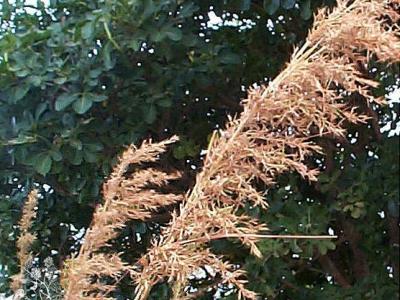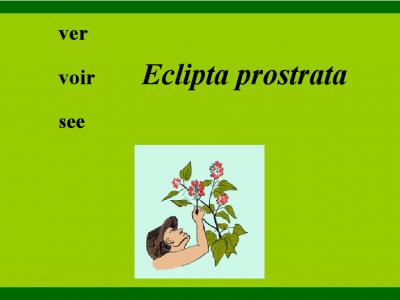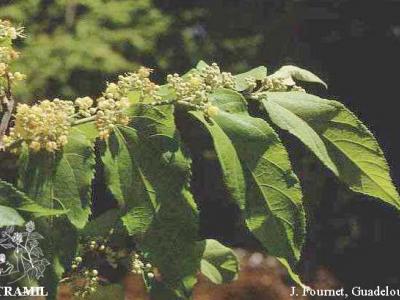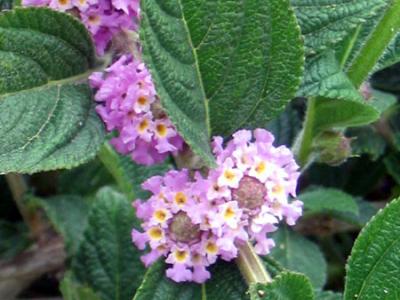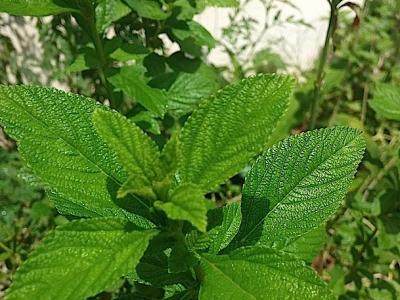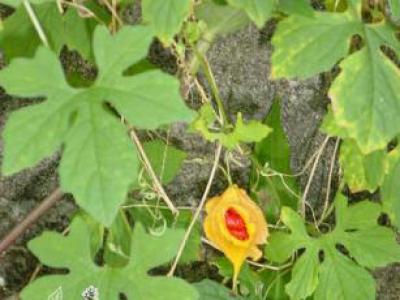(In territories with significant traditional TRAMIL use)
Cuba:
- anón
Martinique:
- pomm kannel
Antigua and Barbuda:
- sugar apple
leaf, decoction, orally3
According to the information available:
The use for liver crises (“mal fwa”) is classified in the REC category based on the significant traditional use documented in the TRAMIL surveys and the toxicity studies.
If deterioration is observed in the patient or the liver crisis persists for more than 3 days, seek medical attention.
The use for stomach pain, wind and colds is classified in the REC category based on the significant traditional use documented in the TRAMIL surveys, the toxicity and validation studies and the scientific information published.
If deterioration is observed in the patient or the stomach pain persists for more than 3 days, seek medical attention.
Considering the possible risk of neurotoxicity, due to the presence of neurotoxic compounds present in the leaf of some species of the Annonaceae family, related to the appearance of atypical parkinsonism4, avoid prolonged use (longer than a year).
Not for use during pregnancy because it can cause miscarriage, nor while breastfeeding or in children under 12 years of age.
For stomach pain:
prepare a decoction with 30 grams of buds in 4 cups (1 litre) of water, boil for 5 minutes in a covered vessel. Leave to cool, strain (filter) and drink 1 cup 3 or 4 times a day.
For wind and cold:
prepare a decoction with 50 fresh leaves (10 grams) or 30 grams of previously washed aerial parts, in 4 cups (1 litre) of water, boil for 10 minutes in a covered container. Leave to cool, strain (filter) and drink 1 cup 3 or 4 times a day.
Preparations must never be stored for more than 24 hours, even if refrigerated.
1 LONGUEFOSSE JL, NOSSIN E, 1990-95
Enquête TRAMIL. Association pour la valorisation des plantes médicinales de la Caraïbe AVPMC, Fort de France, Martinique.
2 CARBALLO A, 1990
Encuesta TRAMIL. Centro de investigación de fitoterapia y medicina tradicional de Topes de Collantes, Trinidad, Cuba.
3 O'REILLY A, 1992
TRAMIL survey. Chemistry & Food Technology Division, Ministry of Agriculture, Dunbars, Antigua & Barbuda.
4 CAPARROS-LEFEBVRE D, 2003
Atypical parkinsonism in the tropics: from Pacific to the Caribbean and evaluation of isoquinoline derivatives toxicity. In: The 9th meeting of the International Neurotoxicology Association (INA-9) abstracts book. Dresden, Germany:p19.
5 MOREJÓN Z, VICTORIA MC, MOROÓN F, MÉNDEZ G, 2005
Tamizaje fitoquímico de la decocción de hoja fresca y extracto fluido de hoja seca de Annona squamosa L. Informe TRAMIL. Laboratorio Central de Farmacología, Facultad de Ciencias Médicas "Dr. Salvador Allende", La Habana, Cuba.
6 JOSHI HD, BAXI GA, BAXI AJ, 1992
Free amino acids and sugars of Annona squamosa Linn. Asian J Chem 4(1):49-52.
7 MOORE BD, ISIDORO E, SEEMANN JR, 1993
Distribution of 2-carboxyarabinitol among plants. Phytochemistry 34(3):703-707.
8 YADAV D, SINGH N, DEV K, SHARMA R, SAHAI M, PALIT G, MAURY R, 2011
Anti-ulcer constituents of Annona squamosa twigs. Fitoterapia 82(4):666-675.
9 SHARMA RK, BEHARI M, 1992
Screening of the compounds isolated from the leaves of Annona squamosa for antibacterial activity. Acta Cienc Indica Chem 18(3):249-252.
10 SHARMA RK, 1993
Phytosterols: wide-spectrum antibacterial agents. Bioorg Chem 21(1):49-60.
11 SHARMA RK, BEHARI M, 1992
Screening of the compounds isolated from the leaves of Annona squamosa for antibacterial activity. Acta Cienc Indica 27C(3):249-252.
12 YANG HJ, LI X, ZHANG N, CHEN JW, WANG MY, 2009
Two new cytotoxic acetogenins from Annona squamosa. J of Asian Natural Products Research 11(3):250–256.
13 JOHNS T, WINDUST A, JURGENS T, MANSOR SM, 2011
Antimalarial alkaloids isolated from Annona squamosa. Phytopharmacology 1(3):49-53.
14 VILA-NOVA NS, DE MORAIS SM, FALCÃO MJ, MACHADO LK, BEVILÁQUA CM, COSTA IR, DE SOUSA BRASIL NV, DE ANDRADE JÚNIOR HF, 2011
Leishmanicidal activity and cytotoxicity of compounds from two Annonacea species cultivated in Northeastern Brazil. Rev Soc Bras Med Trop 44(5):567-571.
15 WAGNER H, REITER M, FERSTL W, 1980
New drugs with cardiotonic activity. I. Chemistry and pharmacology of the cardiotonic active principle of Annona squasmosa L. Planta Med 40:77-85.
16 SEETHARAMAN TR, 1986
Flavonoids from the leaves of Annona squamosa and Polyalthia longifolia. Fitoterapia 57(3):198-199.
17 SONI H, SHARMA S, PATEL SS, MISHRA K, SINGHAI AK, 2011
Preliminary phytochemical screenig and HPLC analysis of flavonoids from methanolic extract of leaves of Annona squamosa. International Research J of Pharmacy 2(5):242-246.
18 BALBAA SI, HAGGAG MY, TAHA KF, 1977
Study of volatile oil content of the leaves of Annona squamosa growing in Egypt. Egypt J Pharm Sci 18:1-8.
19 RAI C, MUTHANA MS, 1954
Essential oil from the leaves of Annona squamosa. J Indian Inst Sci 36:117.
20 MARTÍNEZ I, MORÓN FJ, VICTORIA MdC, BRITO G, ACOSTA L, FUENTES V, 2011
Efecto antipirético oral de la decocción 30% de hojas frescas de Annona squamosa (anón) en ratas. Informe TRAMIL. Facultad de Ciencias Médicas “Dr. Salvador Allende”, Laboratorio Central de Farmacología, La Habana, Cuba.
21 VICTORIA MC, MORÓN F, MARTÍNEZ MC, PINEDO Z, BOUCOURT E, MOREJÓN Z, FUENTES V, 2006
Actividad analgésica de la decocción de hoja fresca de Annona squamosa L. en contorciones inducidas por ácido acético en ratones. Informe TRAMIL. Laboratorio Central de Farmacología, Facultad de Ciencias Médicas "Dr. Salvador Allende", La Habana, Cuba.
22 MORÓN F, VICTORIA MC, MARTÍNEZ MC, PINEDO Z, BOUCOURT E, MOREJÓN Z, FUENTES V, 2005
Actividad antiinflamatoria de la decocción de hoja fresca de Annona squamosa L. en ratas. Informe TRAMIL. Laboratorio Central de Farmacología, Facultad de Ciencias Médicas "Dr. Salvador Allende", La Habana, Cuba.
23 PUAPATANAKUL O, 1980
Clinical studies of Annona squamosa seeds and leaves for treatment of head lice. J Pharm Ass Thailand 34(2/3):91-105.
24 MOHAMED SALEEM TS, CHRISTINA AJM, CHIDAMBARANATHAN N, RAVI V, GAUTHAMAN K, 2008
Hepatoprotective activity of Annona squamosa Linn. on experimental animal model. Int J Applied Research in Natural Products 1(3):1-7.
25 PALANISAMY A, RAJESH V, PERUMAL P, VAMSI B, 2011
Anti ulcer activity of ethanolic extract of Annona squamosa leaves. Int J of Pharmaceutical Research and Development 4(1):162–167.
26 MARTÍNEZ MJ, MOREJÓN Z, LÓPEZ M, BOUCOURT E, BARCELO H, LAYNEZ A, FUENTES V, MORÓN F, 2003
Clases Tóxicas Agudas (CTA) de decocción cogollo fresco de Annona squamosa L. en ratas. Informe TRAMIL. Laboratorio Central de Farmacología, Facultad de Ciencias Médicas “Dr. Salvador Allende”, La Habana, Cuba.
27 MARTÍNEZ MJ, MOREJÓN Z, LÓPEZ M, BOUCOURT E, BARCELO H, LAYNEZ A, FUENTES V, MORÓN F, 2003
Clases Tóxicas Agudas (CTA) de decocción de hoja fresca de Annona squamosa L. en ratas. Informe TRAMIL. Laboratorio Central de Farmacología, Facultad de Ciencias Médicas “Dr. Salvador Allende”, La Habana, Cuba.
28 MARTÍNEZ MJ, MOREJÓN Z, LÓPEZ M, BOUCOURT E, BARCELO H, LAYNEZ A, FUENTES V, MORÓN F, 2003
Clases Tóxicas Agudas (CTA) de decocción de partes aéreas secas de Annona squamosa L. en ratas. Laboratorio Central de Farmacología, Facultad de Medicina “Dr. Salvador Allende”, Informe TRAMIL. La Habana, Cuba.
29 MARTÍNEZ MJ, MOREJÓN Z, LÓPEZ M, BOUCOURT E, FUENTES V, MORÓN F, 2005
Clases tóxicas agudas (CTA) de extracto fluido de hoja seca de Annona squamosa L. en ratas. Informe TRAMIL. Laboratorio Central de Farmacología, Facultad de Ciencias Médicas “Dr. Salvador Allende”, La Habana, Cuba.
30 BARROS GSG, MATOS FJA, VIEIRA JEV, SOUSA MP, MEDEIROS MC, 1970
Pharmacological screening of some Brazilian plants. J Pharm Pharmacol 22:116.
31 MISHRA MB, TEWARI JP, MISHRA SS, 1966
Studies in indigenous uterotonic drugs (a preliminary note). Indian J Physiol Pharmacol 10:59.
32 SHIRWAIKAR A, RAJENDRAN K, DINESH KUMAR C, BODLA R, 2004
Antidiabetic activity of aqueous leaf extract of Annona squamosa in streptozotocin–nicotinamide type 2 diabetic rats. J Ethnopharmacol 91(1):171-175.
33 BHAKUNI OS, DHAR ML, DHAR MM, DHAWAN BN, MEHROTRA BN, 1969
Screening of Indian plants for biological activity. Part II. Indian J Exp Biol 7:250-262.
34 CAPARROS-LEFEBVRE D, ELBAZ A, 1999
Possible relation of atypical parkinsonism in the French West Indies with consumption of tropical plants: a case-control study. Lancet 354(9175):281-286.


